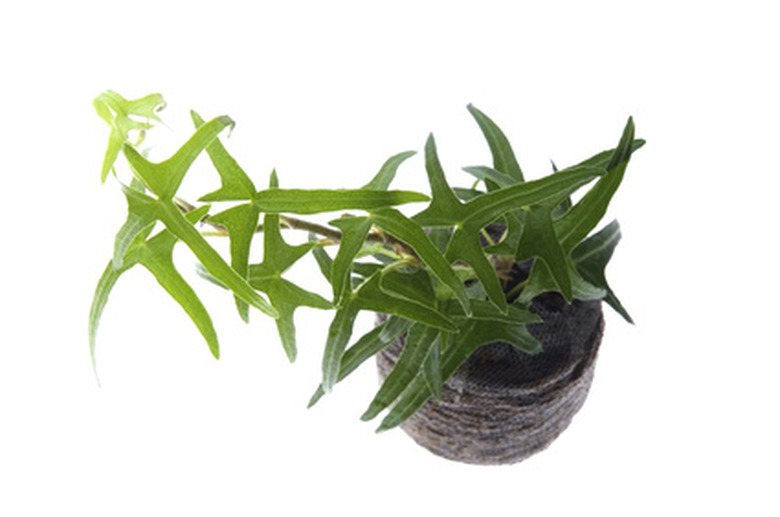Different Species Of Ivy House Plants
The three ivies most commonly grown as houseplants are the Algerian ivy, Persian ivy, and English ivy. All these varieties are adaptable, working equally well growing up a support or spreading down from a hanging basket. Ivy is the classic topiary plant because of its willingness to grow up and around structures. Almost all ivy plants appreciate bright light without direct sun, good drainage and cool, moist air.
Algerian Ivy
Algerian ivy (Hedera caneriensis) is also known as the Canary Island ivy or Madeira Ivy. Its 4- to 8-inch long leaves are glossy, broad and heart-shaped. Although it is most commonly used outdoors for pots and window boxes, Algerian ivy can also be cultivated indoors. It grows vigorously, making it ideal for a hanging basket, according to the Clemson University Extension. This ivy is commonly used by the florist trade in bouquets. Some widely grown varieties are "Gloire de Marengo," with gray-green leaves with creamy edges; "Variegata," with leaves edged in yellow-white; and "Canary Cream," which has mottled leaves with a cream margin.
- The three ivies most commonly grown as houseplants are the Algerian ivy, Persian ivy, and English ivy.
Persian Ivy
Persian ivy (Hedera colchica) is another vigorous grower. With leathery, heart-shaped leaves measuring 3 to 8 inches wide and up to 10 inches long, this species has the largest leaves of any ivy. When crushed, the leaves give off a distinctive aroma. Like the Algerian ivy, Persian ivy is a good choice for a hanging basket. Two colorful cultivars are "Dentata Variegata," which gets its name from the slightly toothed light green leaves variegated with gray streaks and white edges, and "Sulphur Heart," which has green leaves splashed with a bright yellow.
English Ivy
English ivy (Hedera helix) is probably the best known ivy and an excellent houseplant for a beginner. There are hundreds of cultivars available, with a wide variety of leaf shape, form, size and color. The American Ivy Society named Ritterkreuz (German for "knight's cross") the 2010 Ivy of the the Year. Its name derives from its Maltese Cross-shaped leaf. Duck Foot is a diminutive ivy aptly named for the shape of its shiny, light green leaves with rounded lobes. "Misty" is a lovely variegated ivy with an overall silver-gray color. In general, variegated ivies require a good amount of light to maintain their best color.
- Persian ivy (Hedera colchica) is another vigorous grower.
- English ivy (Hedera helix) is probably the best known ivy and an excellent houseplant for a beginner.
Ivy Divisions
The American Ivy Society uses an eight-category system to identify ivy. Variegated ivies have two or more colors, including white, cream, gold, yellow or chartreuse. Bird's foot ivies look like the feet of a bird, with narrow lobes and long, thin leaves. Fan ivies have broad leaves with 5 to 9 lobes of equal length, resembling a fan. Curlies are ivies with leaves which are wavy, ruffled or ridged. Heart-shaped ivies, sometimes called "sweethearts," have a leathery look and are rarely lobed. Miniatures are slow growers and the smallest ivies. Their largest leaves are no bigger than 3/4 inches long and 1/2 inch wide; they make good terrarium subjects. An ivy plant can fall into more than one of these categories.
- The American Ivy Society uses an eight-category system to identify ivy.
- Heart-shaped ivies, sometimes called "sweethearts," have a leathery look and are rarely lobed.
